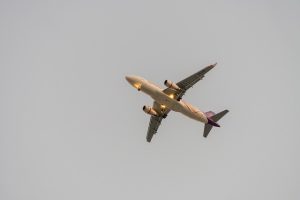
The turbofan has become the most common type of jet engine used in airplanes. Whether it’s a civilian, commercial or military jet, it may feature one or more turbofans. Also known as a fanjet, a turbofan is a type of airbreathing jet engine that leverages both combustion and a ducted fan to generate propulsion.
While all turbofans use combustion and a ducted fan to generate propulsion, they are available in different types. There are low-bypass and high-bypass turbofans, for instance. For a better understanding of low- and high-bypass turbofans, including how they differ, keep reading.
What Is a Low-Bypass Turbofan?
A low-bypass turbofan is a type of jet engine that sucks more air into the combustion chamber than that of a high-bypass turbofan. All turbofans have a bypass ratio. The bypass ratio of a turbofan represents the amount of air that travels around the combustion chamber relative to the amount of air that enters the combustion chamber.
With a turbofan, some of the air will bypass the combustion chamber. Low-bypass turbofans live up to their namesake by allowing less air to bypass the combustion chamber than high-bypass turbofans.
What Is a High-Bypass Turbofan?
A high-bypass turbofan is a type of jet engine that sucks less air into the combustion chamber than that of a low-bypass turbofan. It’s characterized by a high bypass ratio.
During flight, some of the air will enter the turbofan’s combustion chamber, and some of the air will go around or “bypass” the turbofan’s combustion chamber. High-bypass turbofans allow less air to enter the combustion chamber compared to low-bypass turbofans.
Differences Between Low- and High-Bypass Turbofans
All turbofans have a bypass ratio. As previously mentioned, it’s a ratio of the amount of air entering the combustion chamber relative to the amount of air that goes around the combustion chamber. Low-bypass turbofans have a low bypass ratio, whereas high-bypass turbofans have a high bypass ratio.
Low- and high-bypass turbofans are designed differently. To allow more air to enter the combustion chamber, high-bypass turbofans feature a larger ducted fan. The large ducted fan will guide air around the engine’s core, resulting in a high bypass ratio. Low-bypass turbofans, in comparison, feature a smaller ducted fan.
Another difference between low- and high-bypass turbofans is efficiency. High-bypass turbofans are typically more efficient than their low-bypass counterparts. They consume less fuel — and they produce fewer emissions — making them a popular choice among commercial airlines.
While most commercial jets use high-bypass turbofans, military jets often use low-bypass turbofans. This is because low-bypass turbofans are more powerful. They produce more jet thrust than high-bypass turbofans.



